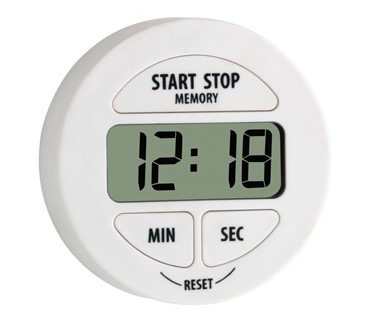Universities have revealed the most popular destinations for 2024 applicants

This year, Russian universities are ready to accept the largest number of applicants in recent years for study at the expense of the budget - 621 thousand people, Minister of Science and Higher Education Valery Falkov announced at the beginning of the admissions campaign.
RBC surveyed universities from the top twenty (as ranked by the analytical company RAEX) about their plans for the admissions campaign, which started on June 20.
At Moscow State University (number one in the ranking) this year, almost 200 more budget-funded places were allocated than last year - 4,225 budget-funded places in bachelor’s and specialist’s programs and 2,544 budget-funded places in master’s programs. In total, the university plans to recruit about 10 thousand freshmen studying both on a budget and on a contract basis, the university reported.
At ITMO University , the number of budget places has increased by about 10% compared to last year: 1,384 budget places are provided for bachelor’s degrees, and 2,679 for master’s degrees. The university plans to admit approximately the same number of first-year students on a paid basis.
At Tomsk Polytechnic University (TPU), the number of state employees was increased by 260 for undergraduate and specialist programs. A total of 3,427 budget-funded places are open for all forms of undergraduate, specialist and master’s degrees, as well as 196 budget-funded places in postgraduate studies. The number of budget places in master's programs decreased by 75 compared to last year. The HEAD of the TPU recruitment organization department, Alexander Denisevich, noted that such changes “correspond to the general trends of transformation of the higher education system in the country.”
This year, MIPT plans to admit 79 more state-funded students to undergraduate studies than last year. The number of budget places in graduate school also increased - by 20. In total, 1,077 places were allocated for undergraduate programs, 1,070 for master's programs and 299 for postgraduate programs. This year, 1,067 places are provided for the admission of students on a paid basis: bachelor's degree - 250 places, master's degree - 757 places and postgraduate studies - 60 places.
As Denis Dmitriev, executive secretary of the MIPT admissions committee, noted, the number of paid undergraduate places at the university traditionally does not exceed 25%. At the same time, due to strict filters for admission (the university is accepted with a minimum of 85 Unified State Examination points in specialized subjects and 70 points in the Russian language), the actual number of students studying on a paid basis, according to Dmitriev’s estimates, will not exceed 15%.
This year, Kazan Federal University allocated 175 budget places. A total of 7,499 state employees will be able to enroll.
The number of budget places at the Moscow State Technical University (MSTU) remains at the level of last year . N.E. Bauman . In total, the university, including branches in Mytishchi and Kaluga, provides 4,769 places this year (bachelors - 2,875, specialists - 1,894). 998 places have been allocated for those wishing to enroll in the master's program.
MEPhI has allocated 1,067 budget places for bachelors and specialists in Moscow, and 743 for masters. The branches of the university will accept more than 1 thousand state-funded students, and they plan to accept about 500 students in Moscow for a paid form of education.
A large number of students are accepted on a paid basis by the Higher School of Economics (HSE) and the Financial University . Thus, HSE is ready to accept 3,923 state-funded students and 5,655 paid students.
This year, the Financial University has allocated more than 4 thousand budget places for higher education programs and about 1.4 thousand places for secondary vocational education programs. There are about 5,500 seats in total. According to the agreements, they plan to accept 10 thousand people.
At the Russian Economic University (REU) named after. G.V. Plekhanov plans to admit more than 4 thousand people to bachelor’s, specialist’s and master’s programs on a budgetary and extra-budgetary basis. MISIS has about 5 thousand freshmen, who are equally divided between state employees and contract employees.
There are 2,491 budget places available at RUDN this year. Most of all in the programs of mathematics and mechanics, ecology, computer and information sciences, medicine, nanoengineering, and chemistry, the university press service reported. The university also provides targeted quotas; the RUDN University has more such places in medical specialties - 54 places out of 256. The university can accept 3,569 students for full-time study on a contract basis.
What programs do applicants choose?Universities surveyed reported growing interest among applicants in it programs. “Of course, areas related to IT and artificial intelligence technologies are now in special demand; the Faculty of Computational Mathematics and Cybernetics trains leading specialists in this field, having the opportunity, among other things, to integrate our supercomputer into the educational and scientific process,” MSU Rector Victor told RBC Sadovnichy.
The demand for this area was also noted in MIPT, HSE, REU. G.V. Plekhanov, Financial University, MISIS. ITMO said that the Computer Technologies program and the new joint program with Yandex and Sber AI360: ML Native, aimed at developing new fundamental models, architectures and machine learning algorithms, are in greatest demand at the university. Also among the leaders are the university's programs in information systems and technologies, information security, robotics, and physics.
At MIPT, in addition to IT majors, there are many applicants for biotechnology and traditional physics and technology engineering and natural science programs.
Competition for IT majors at Plekhanov University has increased more than 20 times in recent years, the university’s press service reported. We are talking about such programs as “Applied Informatics”, “Information Systems and Technologies”, “Informatics and Computer Science”.
How many people per seatCompetition for a place upon admission shows how high the competition is for a certain program and form of study, but many universities do not consider this indicator relevant; they rely on the average score of applicants upon admission.
“We believe that the indicator “number of people per place” does not provide enough information, since it only shows the number of applications submitted relative to the number of budget places. It often happens that applications are submitted without a clear intention of going to university. In this case, it is not entirely correct to take into account applicants who apply with a very low score “just in case.” It is much better to focus on the average passing grade,” explained the press service of MSTU. N.E. Bauman. Last year, the average passing Unified State Exam score for one subject upon admission to the university was 80.7, and for the sum of three subjects - 242. This year the university does not expect an increase in the indicator above 1-1.5 points.
ITMO expects the average score of applicants to be about 93, the same as last year.
“We have the highest average Unified State Exam score among applicants (96.9), and for some programs it reaches 100 points,” said Denis Dmitriev, executive secretary of the MIPT admissions committee. Due to the strict entrance filter at the university, the competition is relatively small - 2–2.5 people per place. At the same time, Dmitriev noted, the number of applicants based on the results of the Unified State Exam from year to year is about half, and the rest of the applicants are winners and medalists of Olympiads who are given benefits for admission to universities. About 20% of applicants to undergraduate programs can take advantage of the right to enter budget places allocated to separate, special and targeted quotas. At the same time, almost all applicants for “quota” places can take advantage of the discount only if they show high Unified State Examination results in specialized subjects - from 75 points.
As they said at Moscow State University, in 2023 the highest competition was in the faculties of world politics - 71 people per place; at the Higher School of State Audit - 44 people per place; public administration - 43 people per place; space research - 30 people per place.
At Novosibirsk State University (NSU), last year the average competition was approximately 5.5 people per place, and the maximum was 50 people per place. The press service of the university noted that these figures are determined not only by the popularity of a particular area, but also by the number of budget places. The largest number of budget places for the first stage of education at NSU is traditionally in the Faculty of Mechanics and Mathematics - 235, the Faculty of Natural Sciences - 230 and the Faculty of Information Technology - 185 places.
Kazan Federal University reported that they have an average competition of 29–35 people per place.
At the Financial University last year the competition was eight people per place, but this year the university expects higher numbers.
How many beneficiaries will be accepted?The benefits that are provided for admission to bachelor's and specialty programs are established by law. There are two categories: special and separate. A special category provides benefits for the admission of disabled people, orphans, combat veterans, and a separate one - for the admission of participants in the military operation in Ukraine and their children, Heroes of RUSSIA, children of military personnel who participated in hostilities on the territory of other states, as well as children of doctors who died from covid-19 at work.
In addition, a simplified procedure for passing entrance examinations is provided to graduates who graduate from educational organizations in new territories, as well as in the Belgorod, Bryansk, Kursk regions and the city of Sevastopol . They could not take the Unified State Exam, but take entrance tests for admission to a university.
The size of quotas is also approved by law: special and separate quotas are no less than 10% of the total number of budget places established by the university.
Winners and prize-winners of school Olympiads also have an advantage in admission.
At Plekhanov University there are 76 places for special and separate quotas and 101 places for the target quota. Higher competition for these places is observed in humanitarian and socio-economic areas than, for example, in IT areas, the university clarified. There is no quota allocated for the winners and prize-winners of the Olympiads, and therefore they apply for places in the general competition, that is, the places remaining after all quotas are filled.
At MSTU. N.E. Bauman in total has allocated about 1 thousand places for beneficiaries. In previous years, these quotas were not fully selected, the university noted. “This means that, in general, an applicant who has a basis for receiving benefits can with a high degree of probability be enrolled in the budget. In the admissions committee, we try to select for an applicant who has a basis for providing benefits, a direction in which he will most likely enroll without problems,” the press service said.
At NSU, the total number of places for beneficiaries is 290. The university noted that mainly based on the results of the admissions campaign, some of these places remain free and go into the general competition. Last year, 67 students were admitted to bachelor’s and specialist’s programs within a special and separate quota. There are no expulsions from the programs; there are several students who exercised the right to go on academic leave , NSU clarified.
MEPhI provides more than usual for social beneficiaries - 20% of budget places. The university noted that 5% of those who entered the university last year dropped out
At the Higher School of Economics, 408 places are provided for admission under a special quota, and 408 places under a separate quota. MISIS has 85 budget places for each quota.
Tuition fees have increasedThe majority of universities surveyed reported an increase in tuition fees in 2024 .
At MEPhI and Tomsk Polytechnic University, the cost increased by 6% on average. At MEPhI, training in popular programs will cost 350–500 thousand rubles. in year. At Tomsk Polytechnic University for senior courses the increase was 4.5% - in line with the inflation rate, the university clarified. For foreign students from non-CIS countries, the cost increased more - by 10%, and for senior students - also by the inflation rate. The average cost of training at TPU for undergraduate programs will be 199,400 rubles.
At the Financial University, on average, the cost of education increased by 7.82%: the cost of one year of full-time study ranges from 350 thousand to 550 thousand rubles.
At ITMO and MISIS, the cost has increased to 15% for various programs. At ITMO, depending on the program, training will cost from 300 thousand to 459 thousand rubles. in a year. Studying at MISIS will cost a little less: for IT programs the cost will be 309–380 thousand rubles. per year, and for technical specialties - from 357 thousand to 391 thousand rubles.
According to information on the MSU website, the cost of annual full-time undergraduate and specialist studies at a university in Moscow will range from 428 thousand to 525 thousand rubles; full-time master's studies will cost 451.82 thousand rubles.
At the Higher School of Economics, undergraduate education, depending on the specialty, will cost from 430 thousand to 780 thousand rubles. The university also has more expensive bachelor's programs: for example, training in a design program will cost 800 thousand rubles. per year, for film production - 920 thousand rubles, for international business - 1 million rubles. in year.
Read together with it:
- An HSE expert reported on the "evolution of inequality" in access to healthcare.An HSE researcher analyzed Russians' access to healthcare over a ten-year period. In 2021, the influence of financial factors became noticeable for the first time: low income reduces the likelihood of visiting a DOCTOR.Over the ten years from 2011 to 2021, the number of Russians requiring medical care but not receiving it remained virtually unchanged, according to a study by Lyudmila Zasimova, hea...
- Belstat reported how much grain, milk, meat, and vegetables are produced in Belarus per capita.November 14, MINSK . Belarus produces 913 kg of grain, 958 kg of MILK, 341 kg of potatoes, and 304 kg of vegetables per capita, according to a review by the National Statistical Committee for the Day of Agricultural and Processing Industry Workers, BELTA reports. The country also produces 78 kg of fruits and berries, 147 kg of livestock and poultry (slaughter weight), and 4......
- UniCredit заявил о галактических усилиях из-за санкций против РоссииUniCredit старается не нарушить «более 15 тыс. санкций», а также не «совершать ошибки», которые позволят изъять его активы в России, заявил гендиректор. После начала военной операции банк начал рассматривать возможность ухода Итальянский банк UniCredit прилагает «галактические усилия», пытаясь соблюсти международные санкции в отношении своего российского подразделения. Об этом заявил генеральный д...
- Низкое предложение и устойчивый спрос: в Аргентине растут цены на мясоЦены на говядину снова выросли, что отразилось на полках супермаркетов и в мясных магазинах. За последние две недели розничные цены выросли на 8–12%, а на некоторые популярные отрубы рост превысил 15% по сравнению с октябрем. Тем не менее, продажи остаются высокими: потребители продолжают покупать, принимая новые цены и закрепляя тенденцию, которая повторяется каждый год в конце года, когда спрос ...
- Зеленский ввел санкции против своего бизнес-партнераМиндич и Александр Цукерман, который, как считается, отвечает за его финансовые вопросы, значатся как граждане Израиля. Санкции против них ввели на три года, они включают блокировку активов. На Украине сочли ограничения мягкими Владимир Зеленский Президент Украины Владимир Зеленский подписал указ о введении санкций в отношении совладельца студии «Квартал 95» Тимура Миндича и его знакомого бизнесме...
- Ukrainian companies have been hit by US sanctions due to their ties to Iran.The United States imposed sanctions on two Ukrainian companies, considering them to be front companies for an Iranian agent engaged in procurement for the Iranian state corporation HESA, which produces, among other things, Shahed drones.Two companies registered in Ukraine have been subject to US sanctions related to Iran , according to a statement from the US Treasury Department's Office of Foreig...
- Лучшие не только по молоку. Какие рекорды поставили в экспериментальной базе имени КотовскогоНовости темы Экспериментальная база имени Котовского известна далеко за пределами Узденщины благодаря высоким показателям, которых из года в год добиваются в хозяйстве. Лучшие результаты в районе агропредприятие показывает как по молоку и зерновым, так и по сахарной свекле. Страда этого года, проходившая не в самых простых погодных условиях, также стала рекордной. Хлеб – всему голова Весна 2.........




























































